Fryer, Charles Francis and Ethel Helena
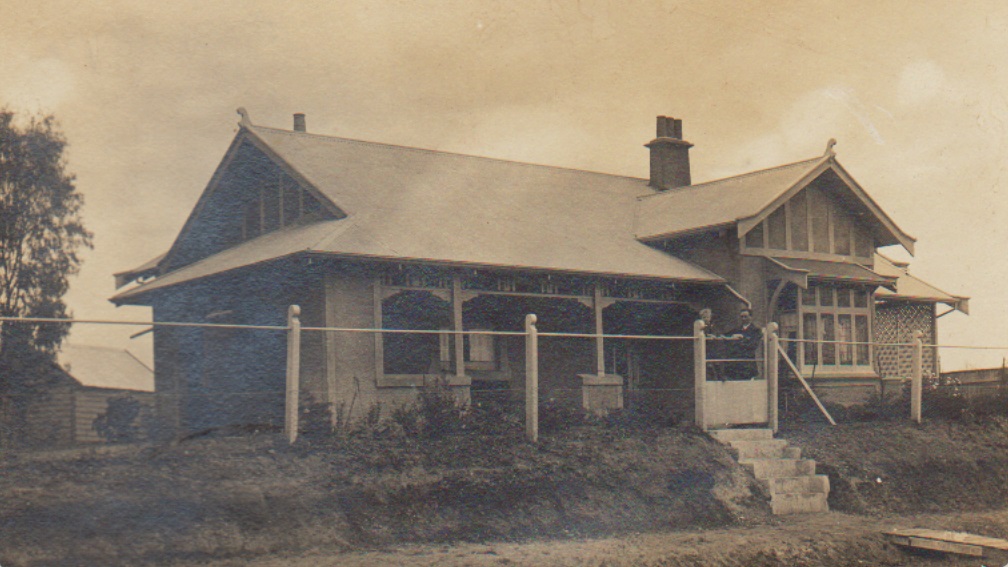
Up until May 2016 when it was demolished, the house standing at 82 Montacute Road Hectorville once belonged to Charles Francis (Frank) and Ethel Helena Fryer. It was built on land that had been a part of the Ellythorpe orchard and cannery (see the Cosford Estate article). It is likely that Charles Fryer purchased the house from his brother Edward Henry Fryer who obtained the land from Henry Binns Robson. Henry Binns Robson was married to Edward and Charles’ sister Annie Catherine Fryer. The house was listed for sale in The Mail (Adelaide, SA) on Saturday 4th November 1916 for £750.
The advertisement for the house states the reason for sale was Edward Fryer’s intention to move to Tasmania. It can be assumed that the house did not sell at this time as Edward Henry Fryer's move to Hobart did not eventuate until 1919. This was the year that Charles and Ethel returned from France and took up residency in the house on Montacute Road.
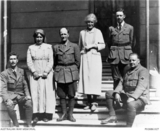
Charles Francis Fryer was born about 1875 in Scarborough Yorkshire. His parents were Charles Fryer and Harriet Cooper Tribe, and siblings Edward Henry Fryer and Annie Catherine Fryer1. Frank gained a B.Sc. from the University of Tasmania and was also a Graduate of the School of Mines, Adelaide.2
Ethel Fryer (nee Ubsdell) was born in St Pancras, London, in April 1884 and was educated at Mary Batchelor Collegiate School, Camberwell London. She trained at Lambeth Hospital and served with Queen Victoria Jubilee Nurses in the slums of London3. She met and married Frank in France during World War l. She became one of the first woman Justice of the Peace in South Australia. Her work as a Good Samaritan in the Hectorville district during the great depression of the 1920s and 30s was well known. She even learnt Braille to enable her to work with the blind4. Ethel Fryer wrote letters and articles throughout her life about her experiences in WW1 and also about her opinions in general and she was often featured in letters to the editor in several South Australian newspapers.
The following is an excerpt from an article written in 1915:
April 1915, Miss Ethel Ubsdell, QN, reporting from the Friends expedition to Chalons-sur-Marne: “Hearing that a certain village had been severely bombarded I started off in the car to see if help was required. We called on the Mayor of the place who told us that a certain woman was expecting her baby and gave us directions to where we should find her. We arrived at the place and found one wall of a house. I went in to investigate but could see nothing. I went a little further and found a sort of scullery place with a hole in the ground…We advanced to the hole and found a sort of rope ladder…We alighted in a black hole and fell over some children, three of them, ranging from 5 years of age down to 2 years. Hearing another moan from a corner and found the poor mother lying on straw, having given birth to a child about an hour previously. Both the mother and the children were covered with vermin…[we] carried the whole family up to the car, and conveyed them off to the hospital. I am thankful to say that the mother and infant are doing well, and the children are none the worse for their experience. The husband of the poor woman we found had been taken prisoner of war5.”
This is one of many examples of her bravery during WW1 and shows her desire to try and alleviate the suffering of the victims of that terrible war.
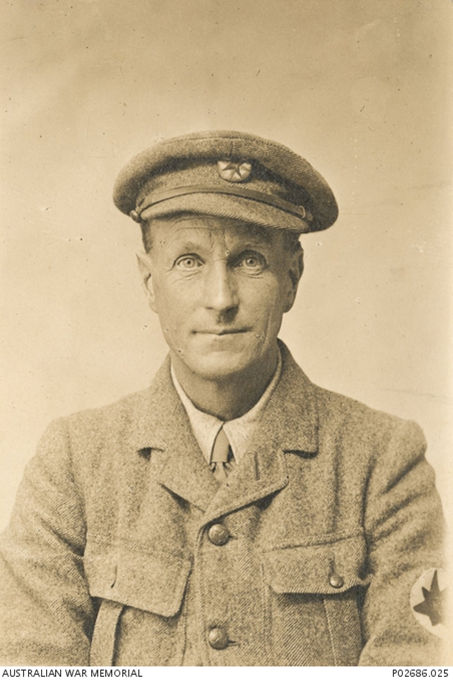
https://www.awm.gov.au/collection/C353409
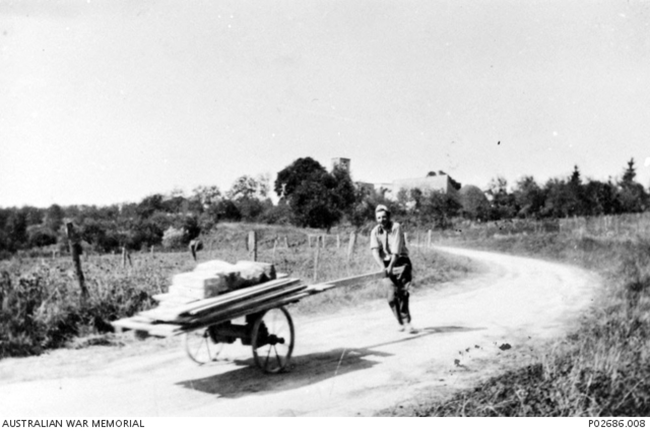
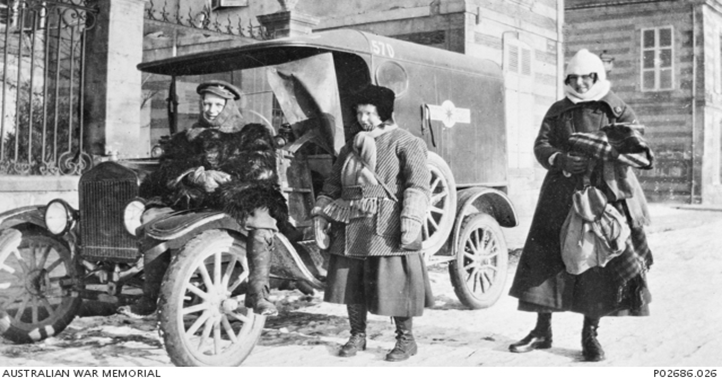
Frank Fryer, was an Australian, who joined the Friends Ambulance Unit, a service provided by the Society of Friends (Quakers) to care for war victims. He drove an ambulance in France, transporting the sick and wounded to designated hospitals. He worked mainly in Sommeilles and Sermaize-les-Bains. The following excerpt from the book "This We Can Say" describes some of Frank’s experiences during the war:
"In 1915 Charles Francis Fryer went to France as one of the Friends' War-Victims-Relief workers, and for about three years shared the labours, dangers, and strain of that body of Quaker youth. His familiarity with motor cars had plenty of scope, as for instance when the French military authorities requested him to evacuate civilians under fire at Rheims. 6 At Bar-le-duc he would go as one of a batch of relief workers to gather up babies, pack them in straw, label them, and bring them to safety. Later in the war, when near Sainte-Menehould, while acting as chauffeur he helped nurses with patients, and on one occasion when it was bitter cold, gave most of the clothes from his own body to wrap helpless humans suffering. At the same time he surreptitiously took photographs of the battle field which, as lantern slides, were used to illustrate his many addresses on peace in Adelaide. His slide of dead soldiers as far as the eye could see was one of the most clinching arguments for peace. Returning to Australia, Frank Fryer became an ardent supporter of the League of Nations, on many occasions speaking on its behalf at big open-air meetings in Adelaide Botanic Park. The cause of civil liberty interested him, and likewise, radical reform of the social-economic order, along the lines of Christian Socialism.7"
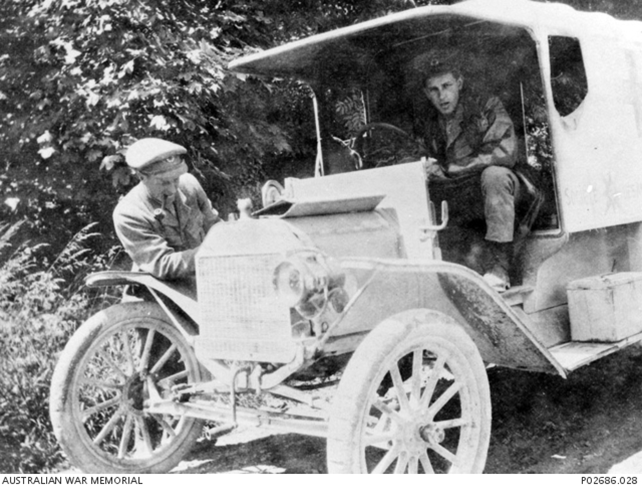
Frank and Ethel Fryer had both shown a strong dedication to community welfare and volunteer service based on their Quaker Christian principles prior to WW1. After the war however, they appear to have embarked upon a more political path to try and find real solutions to the suffering caused by the war. They were both supporters of the early League of Nations and the Peace Pledge Union (P.P.U.). The Peace Pledge Union was a movement formed in Britain in 1934 as a pacifist non-governmental organisation that encouraged men to pledge never to support war. It was open to all men who signed the pledge: “I renounce war, and am therefore determined not to support any kind of war. I am also determined to work for the removal of all causes of war8”.
It was an all male organization because the organisers were trying to counter the idea that only women were pacifists and that war was an integral part of male psychology. They were politically active in trying to achieve the aims outlined in their manifesto and they were socially active dealing with the many problems encountered by service men returning from the war. As a strictly pacifist organization they supported the appeasement policies of the British government which caused them to lose some support when that policy was seen to fail so badly.
Frank Fryer was one of the main organizers of the P.P.U. in South Australia as described in the book “Challenge to Mars – Essays on Pacifism 1918-1945)":
“In South Australia, where a PPU was formed in October 1938, the impulse to organise came largely from a Quaker, Charles Francis Fryer, a former enthusiast for the League of Nations, who from 1936 had been organizing soon an unequivocally pacifist basis. Soon several tiny new pacifist groups joined forces with Fryer to create a single organization. Another Quaker, and former British CO, J.R. Wilton, professor of mathematics at the University of Adelaide, became first chairman of the new P.P.U. branch, which by early 1939 had recruited 260 members, including local Quakers and fifteen Protestant clergymen. On the basis of recent experience, Fryer emphasized to his fellow Christian pacifists the value of so organizing that humanists and other non-Christians should not be excluded from an enterprise needing all the support it could get9”.
Ethel Fryer quite openly shared her husband's views on organized pacifism but it appears that they were both somewhat restricted by the societal gender roles of the first half of the 20th century. Despite this, her letters to the newspapers give us an insight into her thoughts and feelings on this topic.:
August 1929 "From ETHEL FRYER, member of the Society of Friends, Hectorville:— As one of the nurses who served in the Great War, I should like to thank Archdeacon Moyes for his courageous and manly speech reported in "The Advertiser" on August 15, 1929. He touched the depth of what we felt out there, that no quarrel could justify the degradation and the brutalizing effect on the human character demanded by the method of modern warfare. It was the foundation of our loss of faith in the church, but that faith is fully restored by the splendid response of the church to the facts that are now being revealed. Some of us may have to bear the perpetual cinematograph of what we saw for the rest of our lives: but if it was, as promised, "a war to end war," it was all worthwhile10”.
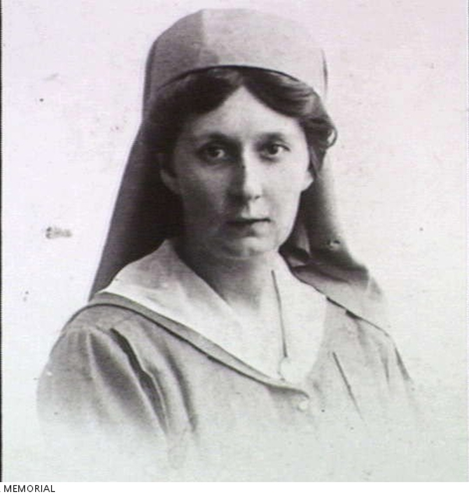
From ETHEL H. FRYER, Hectorville – “Dr Scott West of the Presbyterian Church of New South Wales upholds compulsory military training as an essential Christian duty. One can forgive the church for its attitude towards war prior to the horrors of the last Great War, but that a minister of the Prince of Peace, in the full knowledge of the devilish devices and inhuman cruelties of modern warfare should encourage and prepare for another war surpasses all comprehension. The suffering today of men, women and children gassed in the last war, slowly dying by torture, without hope of relief until death comes, proves that tinkering with antiquated methods of defence is utterly futile. World-wide machinery has been placed in motion for the outlawry of war, and a world court for the settlement of disputes. What is needed, above all, is the Christ example to oil that machinery and a mental and moral uplift towards a strong will for peace. Compulsory military training drags the mind of the nation downwards and teaches youth the criminal activity of murder. It breeds suspicion and mistrust among the nations, and is in itself an act of aggression. We as a nation, profess Christianity – let us show a living faith in the Christ principle at least the size of a grain of mustard seed.”11
Ethel Fryer was awarded the British War Medal and the Victory Medal for her service during WW1. Later in life they retired to Hallett Cove. Charles Francis Fryer died in 1942 and is buried in the Quaker’s Section of West Terrace Cemetery.
Researched and written by Sue Polkinghorne & Vaughan Williams, volunteers with the Campbelltown Library “Digital Diggers” group.
If you have any comments or questions regarding the information in this local history article, please contact the Local History officer on 8366 9357 or hthiselton@campbelltown.sa.gov.au.
References
- werelate.org. Viewed 1 October 2015. www.werelate.org/wiki/Person:Charles_Fryer_(2).
- Wartime Marriage. Folder “Section 280 Ellythorpe & Cosford”. Local History room, Campbelltown Public Library, South Australia. Viewed 1 October 2015.
- invisionzone.com. Viewed 1 October, 2015.http://1914-1918.invisionzone.com/forums/index.php?showtopic=173262
- Ethel Helena Fryer. Folder “Section 280 Ellythorpe & Cosford”. Local History room, Campbelltown Public Library, South Australia. Viewed 1 October 2015.
- District nursing 150. Viewed 1 October, 2015. http://www.districtnursing150.org.uk/history_world_war_one.htm)
- This We Can Say. Viewed 1 October, 2015. https://books.google.com.au.
- This We Can Say. Viewed 1 October, 2015. https://books.google.com.au.
- Peace Pledge Union. Wikipedia. Viewed 1 October, 2015. https://en.wikipedia.org/wiki/peace_pledge_union .
- Challenge to Mars:Essays on Pacifism from 1918-1945. Viewed 1 October 2015. https://books.google.com.au.
- 1929 “HONOR AND WAS,” The Advertiser (Adelaide, SA: 1889-1931), 15 August, p. 16 Viewed 1 October, 2015. http://nla.gov.au/nla.news-article29613724
- 1929 'COMPULSORY MILITARY TRAINING.', The Advertiser (Adelaide, SA : 1889 - 1931), 11 October, p. 28, viewed 8 October, 2015, http://nla.gov.au/nla.news-article73778310
Photo References
- P02686.027. Verdun, France c. May 1920. possible wedding photo of Charles Fryer and Ethel Ubsdell. Australian War Memorial. Viewed 1 October, 2015. https://www.awm.gov.au/collection/C353411 .
- P02686.025. England c. 1914 passport photo of Charles Frank Fryer. Australian War Memorial. Viewed 1 October, 2015. https://www.awm.gov.au/collection/C353409
- P02686.028 A member of the Society of Friends, carting building materials along the road. Viewed 1 October, 2015. https://www.awm.gov.au/collection/C353392.
- P02686.026. Rugged up against freezing conditions group of workers from Society of Friends. Viewed 1 October, 2015. https://www.awm.gov.au/collection/C353410 .
- P02686.028 Sermaize-les-Bains, France. Charles Frank (Francis) Fryer. Australian War Memorial. Viewed 1 October, 2015. https://www.awm.gov.au/collection/C353412
- Ethel Helen Ubsdell https://www.awm.gov.au/search/all/ Viewed 1 October, 2015
